銀杏
Ginkgo Biloba
_____________________________________________________________________________
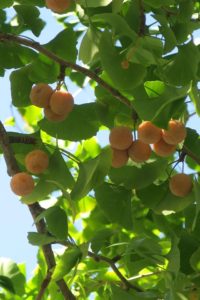
This article was triggered by the easy access of Ginkgo in New Zealand, and the author’s curiosity about how to prepare Ginkgo nuts after seeing elderly people squatting under the fruit-laden tree with piles of harvested Ginkgo fruits. Ginkgo is unique and easy-to-recognize by its leaves. Furthermore, it is hard to ignore the fruits walking under the canopy of Ginkgo tress -the smell is impossible to describe, but certainly unpleasant to most noses.
Ginkgo is not only reported to exert magical influences on brain functions, but it also withstood the detrimental powers of the nuclear blast in Hiroshima. Its species is around 270 million years old and, thus, it has become a symbol of longevity. It is even said to have survived the nuclear bombing of Hiroshima. Interestingly, trees are either male or female and only the female trees produce fruits.
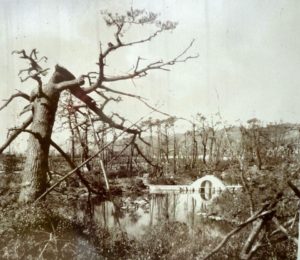
Preparation Method of Ginkgo Nuts for daily consumption:
• Collect the Ginkgo fruits wearing rubber or plastic
gloves.
• Remove the flesh from the seed.
• Wash the seeds thoroughly.
• Either boil or roast the seeds until they pop open or
for the duration of 10-15 minutes.
• Open the seeds by hand or with scissor/pliers.
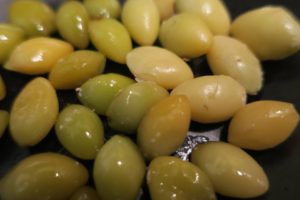
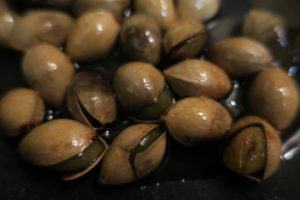
Caution
It is warned that eating even the prepared nuts in excess can lead to Ginkgo-toxin poisoning. More than seventy percent affected by it are children. There is debate as to what number per day is safe for consumption. As a general guideline it is said that 10 pieces per day for an adult and 4 pieces per day for a child should not be exceeded. As even a tiny quantity might cause poisoning, it is, therefore, wise to avoid giving them to small children and babies.
Common signs and symptoms of allergic reactions to touching Ginkgo are rashes, hives, itching, and facial or mouth swelling. If you touch Ginkgo fruits without wearing gloves, avoid touching any other parts of your body and make sure to wash your hands immediately and thoroughly. Signs and symptoms for internal toxin poisoning are vomiting and diarrhea, difficulty breathing and in severe cases loss of consciousness. If you experience dizziness after eating Ginkgo nuts, go to A & E at once.
Listed below is one more therapeutic usage for Ginkgo:
银杏叶药酒
Ginkgo Leaf Medicinal Wine
配方
Prescription
Dry Ginkgo Leaves [银杏叶] appropriate amount.
制法
Preparation
Soak the Ginkgo Leaves in 39 percent of White Spirits for one week.
(For 100 grams of Ginkgo Leaves use 100ml of White Spirits)
用法
Application
Ingest 20ml every day, twice daily, continue for thirty days.
功效
Effects
Invigorates Blood and transforms stasis.
主治
Main Indication
Prevention of cardiovascular and cerebrovascular disease,
Caution
Use according to quantities, it is not advisable to exceed the measurements.
附记
Note
It is the most suitable time for picking ginkgo leaves, when they are still green in autumn. Dry them in the sun, remove the impurities and prepare for use.
Disclaimer:
Purple Cloud Institute take no responsibility for any poisoning or side-effects resulting from the ingestion of Ginkgo medicinal wine or Ginkgo nuts according to this post. Any ingestion is at the individual’s own risk.
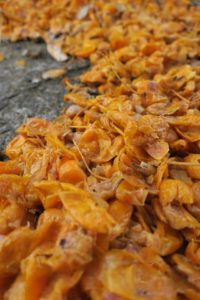
Would you like to subscribe to our newsletter?
If you enjoyed reading this please consider supporting us!
When we started the Purple Cloud Institute, our aim was to make accessible educational material about traditional Chinese cultural practices. We strive to keep prices of our books as affordable as possible and the content we provide free of charge. However, there are many ongoing behind the scenes costs and the time taken to provide such content is considerable.
If you have enjoyed our offerings please consider donating and supporting us. The help will allow us to make time to bring you more in the way of book publications, podcasts and videos about tradition-based Daoist, Chinese medicine and martial arts and help keep these traditions alive.
Your assistance is greatly appreciated!
